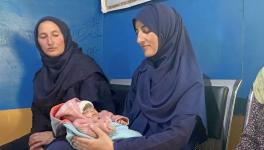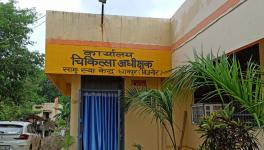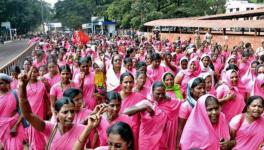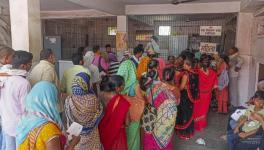Coronavirus Reveals All About Rural Healthcare
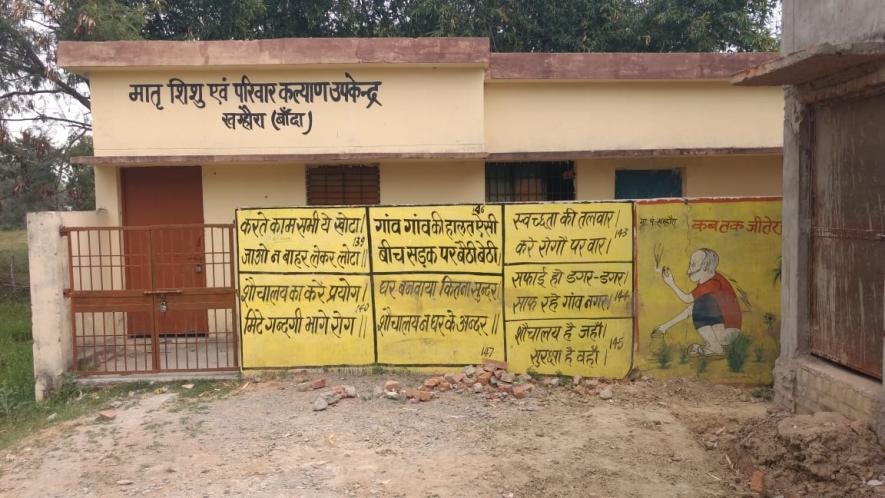
A realistic look at the weaknesses and strengths of the rural health system is essential while India struggles to control the spread of Covid-19. While planning a response to this pandemic, it is essential also to note the basic features of, and changes in, the nature of rural settlements in the country.
A recent visit to several villages in Bundelkhand, Uttar Pradesh, made it clear that India has a well-planned rural health system, but much of it exists only on paper. Some critical parts of rural healthcare have been neglected for so long that they have become very weak. This is particularly true in the settlements where the poorer sections live.
The closest link of the public healthcare system to rural communities is the sub-centre. Its responsibilities, apart from vaccination, maternal and and neonatal care, include control of communicable diseases. However, a very large number of people were simply unaware that these sub-centres are supposed to exist. The reason is that in many places, for all practical purposes, sub-centres are non-existent. There may be a building with signboards declaring it a sub-centre, but most of them are locked up or not in use.
For instance, the centre in Khamora panchayat [pictured] in Banda district has slogans written on it, but it was locked up in the middle of the afternoon. Locals said that they have never seen it open in recent weeks. At the other sub-centre in Atarra (rural) panchayat, not even the path leading to the building was visible. This healthcare centre had been in disuse for so many months together that the road had disappeared under rubble and undergrowth.
As is the case in large parts of rural India, this sub-centre had also become a place for migrant workers or others to squat, for a short while or indefinitely. There were no healthcare workers here, of course, and the building had taken on the air of an abandoned construction. Hence, the most basic unit closest to the rural community of Atarra was non-functional.
The rural sub-centre is a hub for childbirth and maternal care. Yet, in a number of settlements where the poor lived, when asked, almost all residents reported never getting the proper and free medicare they have been promised. Almost everywhere, they are forced to make various payments on one pretext or another. As a result, a normal delivery can cost a family about Rs 1,000 while even a minor complication results in much bigger payments. Naturally, the unhappiest were the women residents, who suffered the most due to these inadequacies.
It is not that our rural healthcare network has no strength at all. At least there is a system of rural healthcare in place, with ANMs and ASHA workers who reach the villages. It is this system which India will have to deploy if it wants to respond to an emergency situation like the one that is arising in the context of Coronavirus. Where this system is strong, as in Kerala, it has proved its capability to handle emergencies effectively. Where it is weak, as in Uttar Pradesh, careful steps must be taken now to make its best possible use while not forgetting the longer-term task of strengthening it.
Much has also been said about India’s great sanitation drive in recent times, but in the seven settlements of the poorest communities I visited in Banda and Chitrakut districts, open defecation exists to the extent of 70 to 100%, and that too in increasingly difficult conditions. Visits to villages, including Kuchbandia Basti in Khamora panchayat of Banda district, and Dafai and Bharatpur villages in Chitrakut district and others, revealed high water scarcity almost everywhere and also very low education and hygiene levels.
The poverty in these places is very high and nutrition levels are very low. In some communities, due to a prevailing local livelihood crisis, there is quite a high dependence on migrant work. People from some villages go as far as Delhi, Mumbai, Surat and parts of Haryana and Punjab in search of work. In other villages the search for livelihood takes people to nearby towns, to work in the mines and at stone-crushing units.
The prospects of livelihood within villages have shrunk, hence even the remote parts are now much more open and linked to nearby towns and cities and even far-off metropolises. With a substantial section of the youth moving away from villages, where they remain for a good part of the year, the overall resilience and strength of these communities has declined.
Even in normal times, many elderly people are in very miserable and vulnerable conditions. One reason is extensive poverty, malnutrition and even hunger, which creates a greater level of deprivation amongst the elderly. The elderly and/or widows report further declines in recent times in the government pensions they receive. With the youth away for work, the elderly lack support and face difficulties in getting adequate and timely nutrition—even meeting their water and sanitation needs is a challenge for many. Their vulnerability has grown and has a number of dimensions.
Within larger villages in this part of the country are hamlets, connected to them but where the poorest sections live. They are generally stuck in the worst location of any larger settlement: low-lying land which is more prone to waterlogging, mud and slush, and also are more difficult to approach. Often an ambulance or other supplies will be unable to reach these hamlets. Sanitation is generally the worst in these hamlets compared with the other settlements of a panchayat. Housing facilities are very poor and people live in congested conditions in tiny houses and huts.
The conditions highlight the apathy and neglect that the poorest people are often victims of. Untouchability in various subtle and open forms is still practised to a significant extent against the members of the Dalit and other non-elite communities, who dominate these settlements of the poorest. Muslim habitations are also suffering increasing injustice. When decisions are taken at the panchayat level, and when visiting officials interact with the dominant leadership of the village, the concerns of the poorer sections are ignored. Their high vulnerability is a result of this mix of circumstances loaded against them, against which the state interventions exist, but are not working as they are supposed to.
One source of strength in these rural communities, despite all the neglect, is that good leadership can still make rural communities capable of overcoming tough times. What is needed is a justice-based strategy that can secure the participation of all sections in tackling any crisis. Hence, the responsibility is with the government and its administration to evolve steps that keep vulnerabilities and needs of the poorest sections.
While evolving effective policies and strategies to tackle a pandemic, it is critical to keep the weaknesses and potential of the Indian healthcare system in mind.
The writer is a freelance journalist who has been involved with several social movements. The views are personal.
Get the latest reports & analysis with people's perspective on Protests, movements & deep analytical videos, discussions of the current affairs in your Telegram app. Subscribe to NewsClick's Telegram channel & get Real-Time updates on stories, as they get published on our website.















